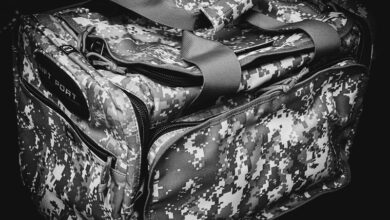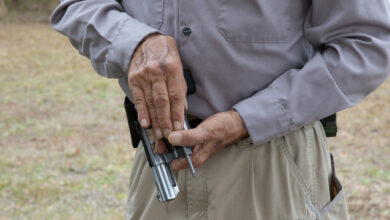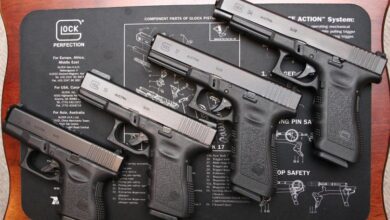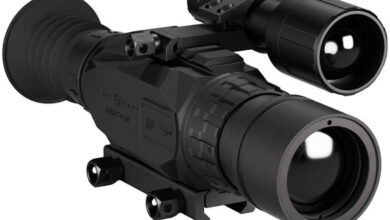Speedloading the Revolver Part 1: The FBI Method
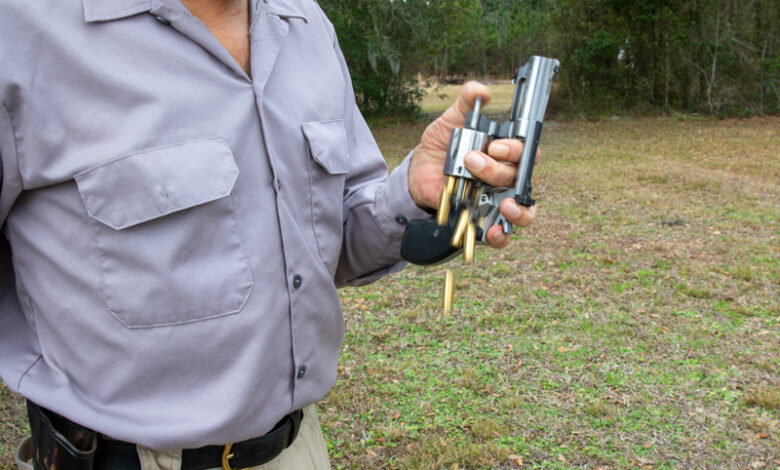
Except for backup snubbies, the double-action “service revolver” has pretty much been transferred from the police armory to the police museum. Furthermore, a growing number of shooters have never even fired one. Lest it become a lost art, we should talk about reloading technique. The limited cartridge capacity may be the single biggest strike against this type of handgun, so techniques for quickly and effectively reloading it become all the more important.
Swing out the cylinder, punch the ejector rod, insert the speedloader and release its payload, close the cylinder, and go back to work. It sounds simple. However, we’ve all heard that “the devil is in the details.” We need to remember that the great architect Ludwig Mies van der Rohe told us, “God is in the details.” So, in detail, we’ll explore various revolver reload methods, going in chronological order. Let’s start with the FBI reload.
The FBI Revolver Reload
The Federal Bureau of Investigation is generally credited with the technique that dominated police revolver training in the second quarter of the 20th Century. Even today, it remains in wide use. However, the FBI reload is a right-handed technique. Southpaws were generally instructed, “Just change hands and do it the ‘normal’ way.”
The right hand thumb pushes forward on the cylinder latch of the Smith & Wesson, Taurus, or Rossi, For Colt, Armscor, or Miroku, it presses rearward while pressing inward on the Ruger or Kimber K6. Simultaneously, the fingertips of the left hand push the cylinder out of its frame window. The left hand now takes a firm grasp, as shown in the photos below. With the muzzle up, the left thumb activates the ejector rod while the right hand reaches for the ammo. The left hand then brings the gun down to the ammo supply (presumably on the belt) while the right hand inserts the ammunition. Next, the right hand grasps the revolver’s grip while the left thumb closes the cylinder.
Pro tip: Close the cylinder before swinging the gun back up. If done simultaneously, a cartridge can back out of a chamber and block the cylinder from closing.
Good News
To this day, there is no faster way to reload a swing-out cylinder revolver than the FBI technique. The economy of motion occurs with the left hand ejecting while the right hand simultaneously reaches for the fresh rounds. The incomparable Jerry Miculek used this technique in his famous record-setting run of six shots, reload, six shots in 2.99 seconds — with 12 good target hits to boot.
Bad News
As noted, a southpaw loses some of the speed advantage by having to change hands and also by needing the less-dexterous hand for the fine-motor task of inserting fresh rounds. However, even the righty can run into problems.
The Magnum Problem
Using the thumb to eject spend casings works fine with low-pressure rounds in a clean gun. During the 1970s-80s large-scale changeover from .38 Special to .357 Magnum, we found if the one-tenth of an inch shorter .38s were fired in the gun prior to the Magnum qualification without cleaning, the much higher pressure .357 would fire-form the cases into 1/10-inches of crud (or sometimes even erosion) in the chambers. As a consequence, the spent Magnum casings simply would not want to eject. In that case, the thumb wasn’t strong enough to do the job.
Hot Magnum rounds presented another problem by heating up the forcing cone rapidly and severely. Consequently, the forcing cone burned the fingers inside the cylinder window. On several occasions, I saw cops drop their guns when that happened.
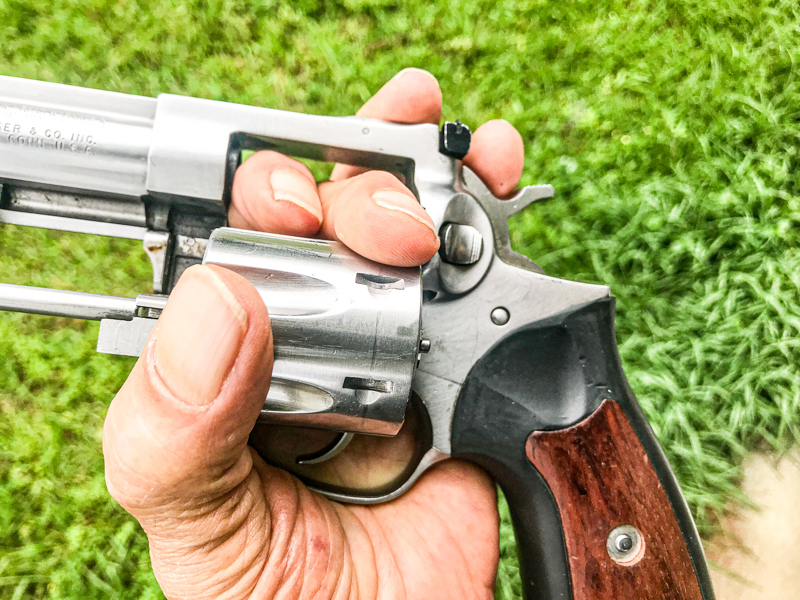
Angle Matters
Even with .38s, you wanted the muzzle straight up for clean ejection. However, that weakened the fingers’ hold on the gun, and most people instinctively held it at an angle. This could cause a case rim to slip under the ejector star, creating a difficult-to-clear and horrendous can’t-shoot-no-more stoppage. Interestingly, full moon clips don’t have this problem as opposed to speedloaders. With the casings held by the clip, they can’t get caught under the star. In the most popular calibers (.45 ACP, 10mm, and 9mm), the short casings were pretty much guaranteed to not get stuck in the chambers. Note that in the above-cited record run, Jerry Miculek used a Smith & Wesson Model 625 .45 ACP with moon clips, which he literally threw into the cylinder.
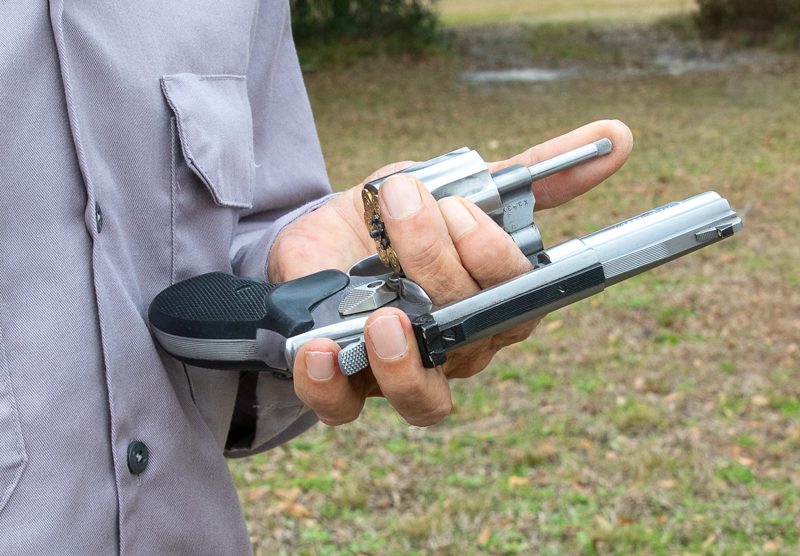
Finally, most hands and wrists held the gun at something close to a 45-degree angle while reloading. That was no problem with the FBI and others reloading loose cartridges because the thumb snapped them decisively into the chambers. But when speedloaders became popular in the 1970s, they relied largely on gravity to help the rounds drop in — and gravity is not at its best at a 45-degree angle. Sometimes, a cartridge failed to seat fully, and the cylinder wouldn’t close.

Beyond the FBI Method
The above factors ultimately led firearms instructors to seek alternative speed reloading techniques for defense revolvers. The next technique to emerge and gain traction also came from a Federal fountainhead: FLETC, the Federal Law Enforcement Training Center.
In the next installment of this series, we’ll explore the FLETC technique.
A police firearms instructor since 1972, currently serving on the advisory board of the International Law Enforcement Educators and Trainers Association, the author has won numerous state and regional service revolver championships in PPC and IDPA beginning circa 1974.
The post Speedloading the Revolver Part 1: The FBI Method appeared first on The Mag Life.
Read the full article here

